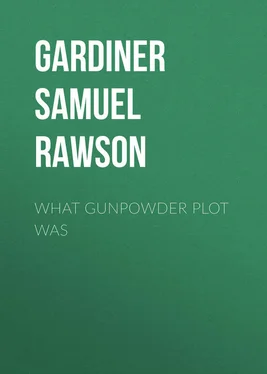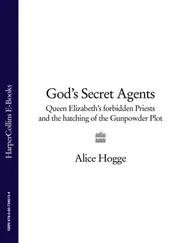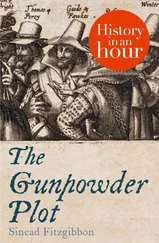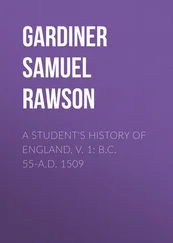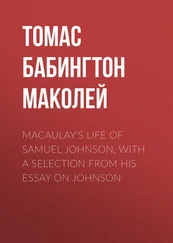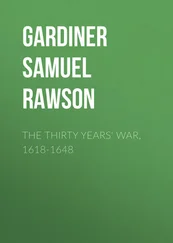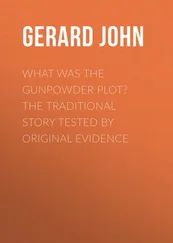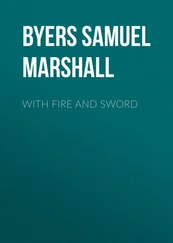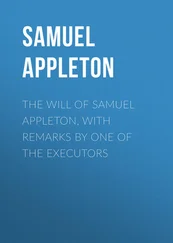Samuel Gardiner - What Gunpowder Plot Was
Здесь есть возможность читать онлайн «Samuel Gardiner - What Gunpowder Plot Was» — ознакомительный отрывок электронной книги совершенно бесплатно, а после прочтения отрывка купить полную версию. В некоторых случаях можно слушать аудио, скачать через торрент в формате fb2 и присутствует краткое содержание. Жанр: foreign_antique, foreign_prose, на английском языке. Описание произведения, (предисловие) а так же отзывы посетителей доступны на портале библиотеки ЛибКат.
- Название:What Gunpowder Plot Was
- Автор:
- Жанр:
- Год:неизвестен
- ISBN:нет данных
- Рейтинг книги:3 / 5. Голосов: 1
-
Избранное:Добавить в избранное
- Отзывы:
-
Ваша оценка:
- 60
- 1
- 2
- 3
- 4
- 5
What Gunpowder Plot Was: краткое содержание, описание и аннотация
Предлагаем к чтению аннотацию, описание, краткое содержание или предисловие (зависит от того, что написал сам автор книги «What Gunpowder Plot Was»). Если вы не нашли необходимую информацию о книге — напишите в комментариях, мы постараемся отыскать её.
What Gunpowder Plot Was — читать онлайн ознакомительный отрывок
Ниже представлен текст книги, разбитый по страницам. Система сохранения места последней прочитанной страницы, позволяет с удобством читать онлайн бесплатно книгу «What Gunpowder Plot Was», без необходимости каждый раз заново искать на чём Вы остановились. Поставьте закладку, и сможете в любой момент перейти на страницу, на которой закончили чтение.
Интервал:
Закладка:
Moreover, Father Gerard further urges what he intends to be damaging to the view taken by me, that a set of questions formed by Coke upon the examination of the 7th, apparently for use on the 8th, is ‘not founded on information already obtained, but is, in fact, what is known as a “fishing document,” intended to elicit evidence of some kind.’ 68 68 Gerard , p. 175. Coke’s questions are in S. P. Dom. xvi. 38.
Exactly so! If Coke had to fish, casting his net as widely as Father Gerard correctly shows him to have done, it is plain that the Government had no direct knowledge to guide its inquiries. Father Gerard’s charge therefore resolves itself into this: that Salisbury not only deceived the public at large, but his brother-commissioners as well. Has he seriously thought out all that is involved in this theory? Salisbury, according to hypothesis, gets an altered copy of a confession drawn up, or else a confession purely invented by himself. The clerk who makes it is, of course, aware of what is being done, and also the second clerk, 69 69 The handwriting is quite different.
who wrote out the further copy sent to Edmondes. Edmondes, at least, received the second copy, and there can be little doubt that other ambassadors received it also. How could Salisbury count on the life-long silence of all these? Salisbury, as the event proved, was not exactly loved by his colleagues, and if his brother-commissioners – every one of them men of no slight influence at Court – had discovered that their names had been taken in vain, it would not have been left to the rumour of the streets to spread the news that Salisbury had been the inventor of the plot. Nay, more than this. Father Gerard distinctly sets down the story of the mine as an impossible one, and therefore one which must have been fabricated by Salisbury for his own purposes. The allegation that there had been a mine was not subsequently kept in the dark. It was proclaimed on the house-tops in every account of the plot published to the world. And all the while, it seems, six out of these seven Commissioners, to say nothing of the Attorney-General, knew that it was all a lie – that Fawkes, when they examined him on the 8th, had really said nothing about it, and yet, neither in public, nor, so far as we know, in private – either in Salisbury’s lifetime or after his death – did they breathe a word of the wrong that had been done to them as well as to the conspirators!
CHAPTER III.
THE LATER DOCUMENTARY EVIDENCE
Having thus, I hope, established that the story of the mine and cellar is borne out by Fawkes’s own account, I proceed to examine into the objections raised by Father Gerard to the documentary evidence after November 8, the date of Fawkes’s last examination before he was subjected to torture. In the declaration, signed with his tortured hand on the 9th, before Coke, Waad and Forsett, 70 70 This declaration, therefore, was not, as Mrs. Everett Green says, ‘made to Salisbury.’
and acknowledged before the Commissioners on the 10th, Fawkes distinctly refers to the examination of the 8th. “The plot,” he says, “was to blow up the King with all the nobility about him in Parliament, as heretofore he hath declared, to which end, they proceeded as is set down in the examination taken (before the Lords of the Council Commissioners) yesternight.” Here, then, is distinct evidence that Fawkes acknowledged that the examination of the 8th had been taken in presence of the Commissioners, and thus negatives the theory that that examination was invented or altered by Salisbury, as these words came on the 10th under the eyes of the Commissioners themselves. 71 71 If anyone chooses to argue that this examination was drawn up regardless of its truth, and only signed by Fawkes after torture had made him incapable of distinguishing truth from falsehood, he may be answered that, in that case, those who prepared it would never have added to the allegation that some of the conspirators had received the Sacrament from Gerard the Jesuit to bind them to secrecy, the passage: – “But he saith that Gerard was not acquainted with their purpose.” This passage is marked for omission by Coke, and it assuredly would not have been found in the document unless it had really proceeded from Fawkes.
The fact is, that the declaration of the 9th fits the examination of the 8th as a glove does a hand. On the 8th, before torture, Fawkes described what had been done, and gave the number of persons concerned in doing it. On the 9th he is required not to repeat what he had said before, but to give the missing names. This he now does. It was Thomas Winter who had fetched him from the Low Countries, having first communicated their design to a certain Owen. 72 72 About whom more hereafter.
The other three, who made up the original five, were Percy, Catesby, and John Wright. It was Gerard who had given them the Sacrament. 73 73 Gerard afterwards denied that this was true, and the late Father Morris ( Life of Gerard , p. 437) argues, with a good deal of probability, that Fawkes mistook another priest for Gerard. For my purpose it is not a matter of any importance.
The other conspirators were Sir Everard Digby, Robert Keyes, Christopher Wright, Thomas 74 74 This should be John.
Grant, Francis Tresham, Robert Winter, and Ambrose Rokewood. The very order in which the names come perhaps shows that the Government had as yet a very hazy idea of the details of the conspiracy. The names of those who actually worked in the mine are scattered at hap-hazard amongst those of the men who merely countenanced the plot from a distance.
However this may be, the 9th, the day on which Fawkes was put to the torture, brought news to the Government that the fear of insurrection need no longer be entertained. It had been known before this that Fawkes’s confederates had met on the 5th at Dunchurch on the pretext of a hunting match, 75 75 Probably, as Father Gerard suggests, what would now be known as a coursing match.
and had been breaking open houses in Warwickshire and Worcestershire in order to collect arms. Yet so indefinite was the knowledge of the Council that, on the 8th, they offered a reward for the apprehension of Percy alone, without including any of the other conspirators. 76 76 Proclamation Book, R.O. p. 117.
On the evening of the 9th 77 77 A late postscript added to the letter to the Ambassadors sent off on the 9th ( Winwood , ii. 173) shows that before the end of the day Salisbury had learnt even more of the details than were comprised in the Sheriff’s letter.
they received a letter from Sir Richard Walsh, the Sheriff of Worcestershire: —
“We think fit,” he wrote, “with all speed to certify your Lordships of the happy success it hath pleased God to give us against the rebellious assembly in these parts. After such time as they had taken the horses from Warwick upon Tuesday night last, 78 78 Nov. 5.
they came to Mr. Robert Winter’s house to Huddington upon Wednesday night, 79 79 Nov. 6.
where – having entered – [they] armed themselves at all points in open rebellion. They passed from thence upon Thursday morning 80 80 Nov. 7.
unto Hewell – the Lord Windsor’s house – which they entered and took from thence by force great store of armour, artillery of the said Lord Windsor’s, and passed that night into the county of Staffordshire unto the house of one Stephen Littleton, Gentleman, called Holbeche, about two miles distant from Stourbridge whither we pursued, with the assistance of Sir John Foliot, Knight, Francis Ketelsby, Esquire, Humphrey Salway, Gentleman, Edmund Walsh, and Francis Conyers, Gentlemen, with few other gentlemen and the power and face of the country. We made against them upon Thursday morning, [81] Nov. 7.
and freshly pursued them until the next day, 81 81 Nov. 8.
at which time about twelve or one of the clock in the afternoon, we overtook them at the said Holbeche House – the greatest part of their retinue and some of the better sort being dispersed and fled before our coming, whereupon and after summons and warning first given and proclamation in his Highness’s name to yield and submit themselves – who refusing the same, we fired some part of the house and assaulted some part of the rebellious persons left in the said house, in which assault, one Mr. Robert Catesby is slain, and three others verily thought wounded to death whose names – as far as we can learn – are Thomas Percy, Gentleman, John Wright, and Christopher Wright Gentlemen, and these are apprehended and taken Thomas Winter Gentleman, John Grant Gentleman, Henry Morgan Gentleman, Ambrose Rokewood Gentleman, Thomas Ockley carpenter, Edmund Townsend servant to the said John Grant, Nicholas Pelborrow, servant unto the said Ambrose Rokewood, Edward Ockley carpenter, Richard Townsend servant to the said Robert Winter, Richard Day servant to the said Stephen Littleton, which said prisoners are in safe custody here, and so shall remain until your Honours good pleasures be further known. The rest of that rebellious assembly is dispersed, we have caused to be followed with fresh suite and hope of their speedy apprehension. We have also thought fit to send unto your Honours – according unto our duties – such letters as we have found about the parties apprehended; and so resting in all duty at your Honours’ further command, we take leave, from Stourbridge this Saturday morning, being the ixth of this instant November 1605.
Интервал:
Закладка:
Похожие книги на «What Gunpowder Plot Was»
Представляем Вашему вниманию похожие книги на «What Gunpowder Plot Was» списком для выбора. Мы отобрали схожую по названию и смыслу литературу в надежде предоставить читателям больше вариантов отыскать новые, интересные, ещё непрочитанные произведения.
Обсуждение, отзывы о книге «What Gunpowder Plot Was» и просто собственные мнения читателей. Оставьте ваши комментарии, напишите, что Вы думаете о произведении, его смысле или главных героях. Укажите что конкретно понравилось, а что нет, и почему Вы так считаете.
